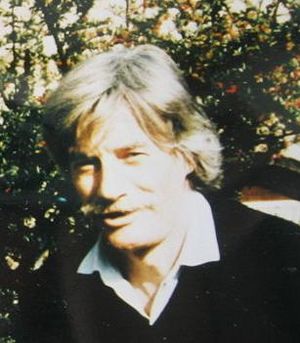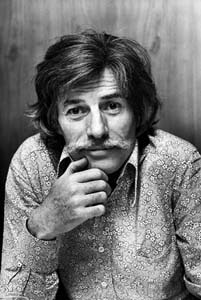Jean Ferrat facts for kids
Quick facts for kids
Jean Ferrat
|
|
|---|---|

Jean Ferrat
|
|
| Background information | |
| Birth name | Jean Tenenbaum |
| Born | 26 December 1930 Vaucresson, France |
| Died | 13 March 2010 (aged 79) Aubenas, France |
| Occupation(s) | singer, songwriter, composer |
| Years active | 1958–2009 |
| Labels | Decca (1960–62) Barclay (1963–76) then Temey |
Jean Ferrat (born Jean Tenenbaum; 26 December 1930 – 13 March 2010) was a famous French singer, songwriter, and poet. He was well-known for setting poetry to music, especially the works of Louis Aragon. Jean Ferrat often expressed his left-wing political views in some of his songs.
Contents
Jean Ferrat's Early Life and Career
Jean Ferrat was born in Vaucresson, France, on December 26, 1930. He was the youngest of four children from a modest family. In 1935, his family moved to Versailles, where Jean studied at the Jules Ferry College.
During World War II, his father, who was Jewish and from Russia, faced terrible persecution. He was forced to wear a yellow star and was sent to a concentration camp called Auschwitz in 1942, where he sadly died.
In the early 1950s, Jean Ferrat began performing in small Parisian clubs called cabarets. He didn't stick to one musical style but always stayed true to himself. In 1956, he put music to a poem by Louis Aragon called "Les yeux d'Elsa" ("Elsa's eyes"). A popular singer named André Claveau performed it, which helped Jean Ferrat gain recognition as a songwriter.
His first record, a 45 RPM single, came out in 1958 but wasn't successful. His career really took off in 1959 when he met Gérard Meys. Gérard became his publisher, close friend, and business partner. Jean Ferrat then signed with Decca and released his second single, "Ma Môme", in 1960.
Marriage and Musical Success
In 1961, Jean Ferrat married Christine Sèvres, who was also a singer. She performed some of his songs. Sadly, Christine passed away in 1981 at the age of 50. Jean also met Alain Goraguer, who became the arranger for many of his songs.
His first album, Deux Enfants du Soleil, was released in 1961. Jean Ferrat also wrote songs for the famous dancer Zizi Jeanmaire. He even toured with her, performing together at the Alhambra for six months.
In 1963, he released the album Nuit et Brouillard ("Night and Fog"). This album won the Académie Charles Cros's Grand Prix du Disque, a very important music award. It showed that any serious topic could be turned into a powerful song. Jean Ferrat toured again in 1965, but he stopped performing on stage in 1973.
In 1990, he received an award from the Société des auteurs, compositeurs et éditeurs de musique (SACEM). This is a French organization that supports songwriters, composers, and music publishers.
Later Life and Passing
Jean Ferrat passed away in Aubenas, Ardèche, on March 13, 2010, at the age of 79. He had been ill for a long time. He lived in Antraigues-sur-Volane, a small village in Ardèche with fewer than 700 people.
Jean Ferrat's Legacy and Tributes
Jean Ferrat's music continues to be remembered and honored. In 2013, his song Nuit et Brouillard was included in the BBC's list of 20 songs that "changed the world." This shows how impactful his music was.
In 2015, a special tribute album was released by Columbia Records. It was called Hommage à Jean Ferrat: Des airs de liberté (Tribute to Jean Ferrat: Tunes of Freedom). On this album, various artists performed their own versions of Jean Ferrat's songs. The 15-track album featured performances by artists like Marc Lavoine, Cali, Dionysos, Julien Doré, Patrick Bruel, Catherine Deneuve, and many others. The album also included Jean Ferrat's original song "Ma France." This tribute album was very popular and appeared on music charts in France, Belgium, and Switzerland.
Discography
Here are some of Jean Ferrat's main albums:
- 1961 : Deux enfants au soleil (includes "Ma Môme", "Federico Garcia Lorca")
- 1963 : Nuit et brouillard (includes "C'est beau la vie", "Nous dormirons ensemble")
- 1964 : La Montagne (includes "Que serais-je sans toi", "Hourrah !")
- 1965 : Potemkine (includes "C'est toujours la première fois", "On ne voit pas le temps passer")
- 1966 : Maria (includes "Heureux celui qui meurt d'aimer", "Un enfant quitte Paris")
- 1967 : À Santiago (includes "Cuba si", "Les Guérilleros")
- 1969 : Ma France (includes "Au printemps de quoi rêvais-tu ?", "L'Idole à papa")
- 1970 : Camarade (includes "Sacré Félicien", "Les Lilas")
- 1971 : La Commune (includes "Les touristes partis", "Aimer à perdre la raison")
- 1971 : Ferrat chante Aragon (includes "Le Malheur d'aimer", "Robert le Diable") – This album sold over 2,000,000 copies!
- 1972 : À moi l'Afrique (includes "Une femme honnête", "Les Saisons")
- 1975 : La femme est l'avenir de l'homme (includes "Dans le silence de la ville", "Un air de liberté") – This album sold 500,000 copies!
- 1979 : Les Instants volés (includes "Le Tiers chant", "Le chef de gare est amoureux")
- 1980 : Ferrat 80 (includes "L'amour est cerise") – This album was certified as a platinum record, meaning it sold a lot of copies!
- including Le Bilan
- 1985 : Je ne suis qu'un cri (includes "La Porte à droite", "Le Chataîgnier")
- 1991 : Dans la jungle ou dans le zoo (includes "Les Tournesols", "Nul ne guérit de son enfance")
- 1995 : Ferrat chante Aragon Vol. 2 (includes "Complainte de Pablo Neruda", "Les feux de Paris", "Lorsque s'en vient le soir")
- 2002 : Ferrat en scène
Compilations
- 2009: Best Of (a collection of his best songs on 3 CDs)
See also
 In Spanish: Jean Ferrat para niños
In Spanish: Jean Ferrat para niños


